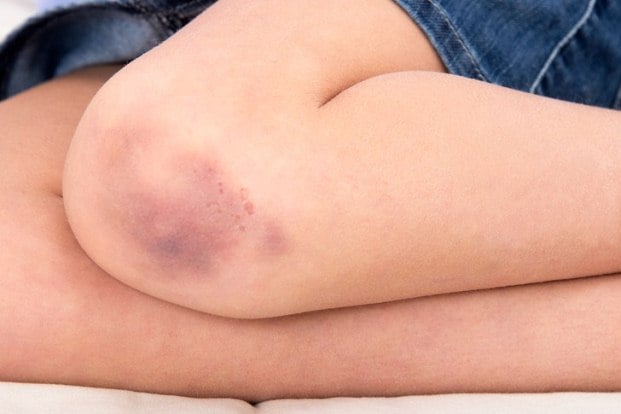Categories
- Bariatric Surgery (11)
- Black Fungus (5)
- Bone Marrow transplant (3)
- Brain Tumor Surgery Navigation Technology (20)
- Cardiac Surgery (66)
- Cardiology (97)
- Computer navigation technology for joint replacements (20)
- Covid Vaccination (17)
- Critical Care (2)
- Dental (19)
- Dermatology (31)
- Dialysis Support Group - “UTSAAH” (11)
- Dietitian (33)
- Emergency Medicine (4)
- Emotional Health (11)
- Endocrinology (33)
- ENT (20)
- Gastroenterology and GI Surgery (53)
- General and Laparoscopic Surgery (21)
- General Surgery (4)
- Gynecology & Obstetrics (183)
- Hematology (20)
- Internal Medicine (294)
- Kidney Transplant (50)
- Kidney Transplantation (20)
- Lung Cancer (8)
- Minimal Invasive Surgery (1)
- Mother & Child (20)
- mucormycosis (5)
- Nephrology (61)
- Neurology (147)
- Neurosurgery (68)
- Nutrition and Dietetics (107)
- Omicron Variant (1)
- Oncology (288)
- Ophthalmology (10)
- Orthopaedics & Joint Replacement (86)
- Paediatrics (59)
- Pediatric Nephrology (3)
- Physiotherapy (5)
- Plastic & Reconstructive Surgery (6)
- Psychiatry and Psychology (90)
- Psychologist (28)
- Pulmonology (72)
- Rheumatology (13)
- Spine Services (21)
- Transradial Angioplasty (16)
- Urology (84)
Query Form
Posted on Apr 19, 2022
Thrombocytopenia (Low platelets)
Platelets are produced in the bone marrow (blood-forming organ) from megakaryocytes. Their number varies from 1.5 lakhs to 4.5 lakhs per cubic mm. Their function is to control bleeding following injury. Low platelets (Thrombocytopenia), leads to bleeding from the skin and mucous membrane (purpura, petechiae, ecchymoses, gum bleeding, epistaxis, hematuria, black stool, and menorrhagia).
Patients with severe thrombocytopenia (less than 10000 per cubic mm) can have spontaneous bleeding from multiple sites and can be life-threatening.

Causes of Thrombocytopenia
- Pseudo thrombocytopenia
This is a lab artifact, where due to the mixing of anticoagulation with patients blood platelet can form clumps and colter machine erroneously gives less platelet count even when the patient has normal platelet. This can be corrected by fresh finger prick peripheral smear examination and doing manual platelet count.
All cases of thrombocytopenia should undergo manual platelet count to rule out pseudo thrombocytopenia.
These patients don’t need any treatment but counseling.
- Harris platelet syndrome
Most common inherited giant platelet disorder. Identified among healthy people of northeastern people of India. It is characterized by mild to moderate thrombocytopenia (rarely less than 50,000/cu mm) with normal platelet aggregation with absent MYH9 mutation.
These patients don’t need any treatment but counseling.
- Immune thrombocytopenia
ITP (Immune thrombocytopenia) is a condition characterized by peripheral destruction of platelets. These patients present with mucocutaneous bleeding skin bleeds gum bleeding, epistaxis, menorrhagia or hematuria. They require treatment after consultation with Hematologist, with immunosuppressant and some time splenectomy is required.
- Drug-induced
Many drugs of cancer chemotherapy and some antibiotics can lead to thrombocytopenia, information of which should be given to treating hematologist and many times discontinuing the culprit drug improves the platelet count.
- Leukemia/Lymphoma
These are cancer arising from bone marrow or lymph nodes and lead to thrombocytopenia. Other than bleeding symptoms, they have a fever, weight loss, joint pain and weakness fatigability as important presenting symptoms. In case of these symptoms, they should be shown to a hematologist urgently and treatment should be started soon to save a life
- Aplastic anemia
In this, the diseased bone marrow stops producing blood and leads to anemia, thrombocytopenia and low white blood count. Patients present with weakness, bleeding manifestation and sometimes fever due to infection. These patients need urgent treatment with stem cell transplantation or anti-thymocyte globulin and cyclosporine or anabolic steroid. They need a frequent blood transfusion to correct cytopenia
What not to do
Avoid trauma, intramuscular injection or painkillers (NSAIDs) if your platelets are low.
What to do
Consult to your hematologist if your platelets are low or if you have symptoms of thrombocytopenia (bleeding).
Platelet transfusion
Platelet transfusions are done by RDP (RANDOM DONOR PLATELET) or SDP (SINGLE DONOR PLATELET) transfusion in case of bleeding due to low platelets or severe thrombocytopenia. Platelets are prepared in blood bank from the donor and transfused after grouping and cross-matching .RDP is transfused over 15 to 20 minutes and SDP is transfused over about 45 minutes.
Sometimes a patient may have chills, rigor or fever during or just after platelet transfusion that can be controlled with anti-allergic injection, so it should always be transfused in a hospital or nursing home under the care of a hematologist or physician.



